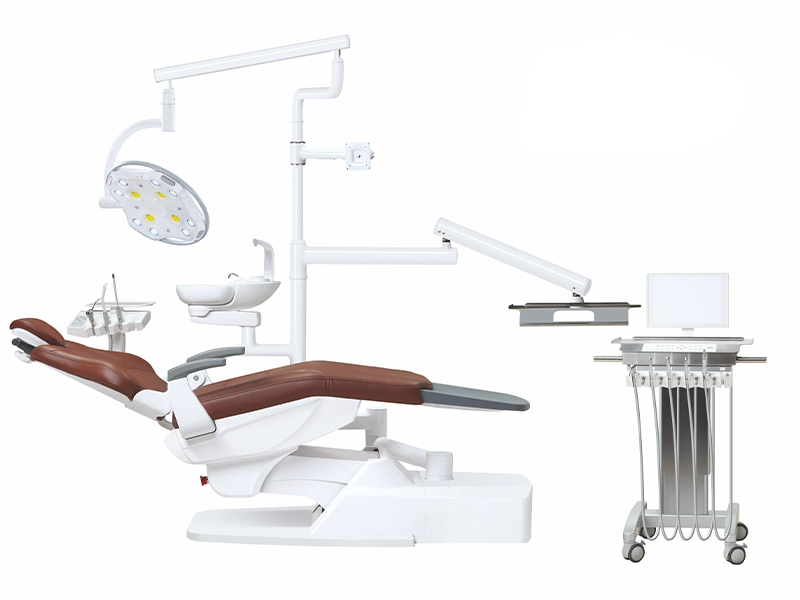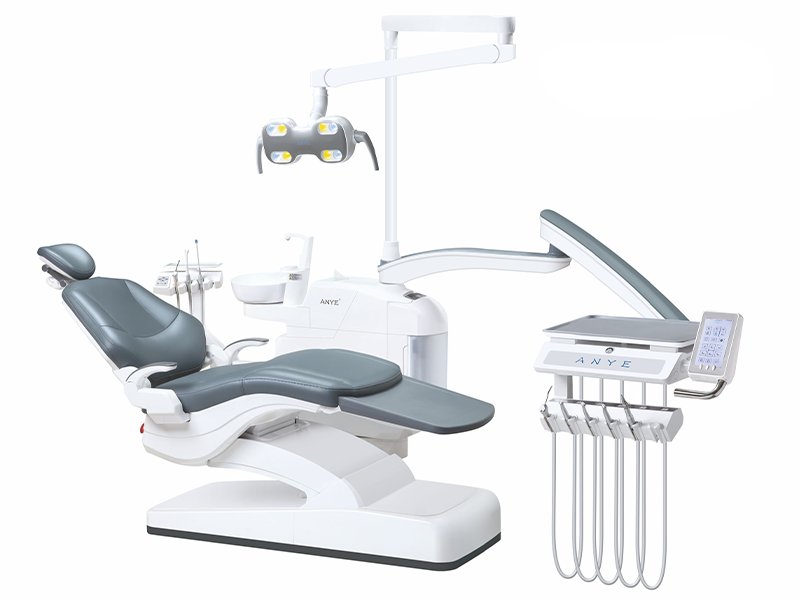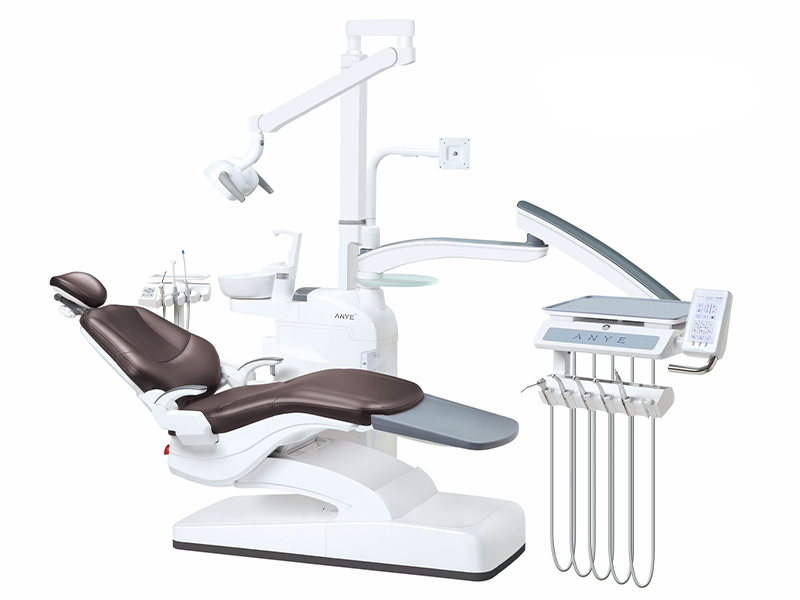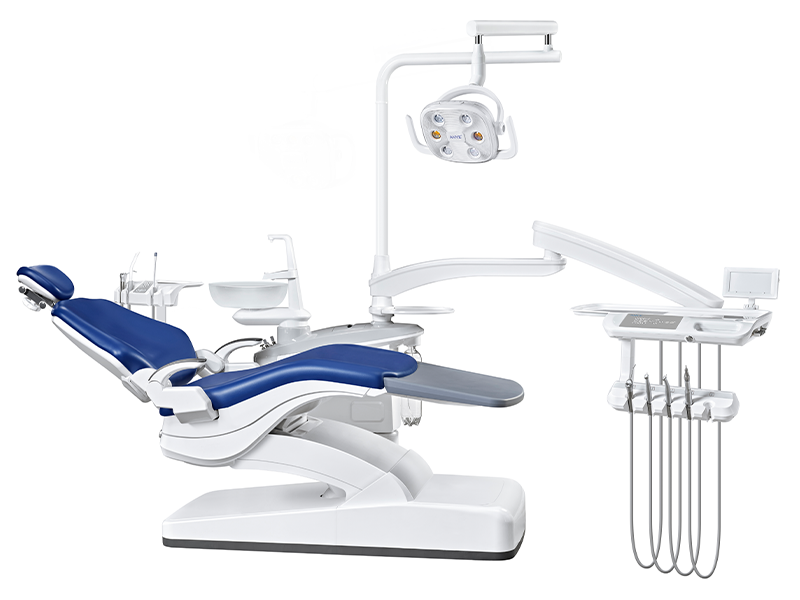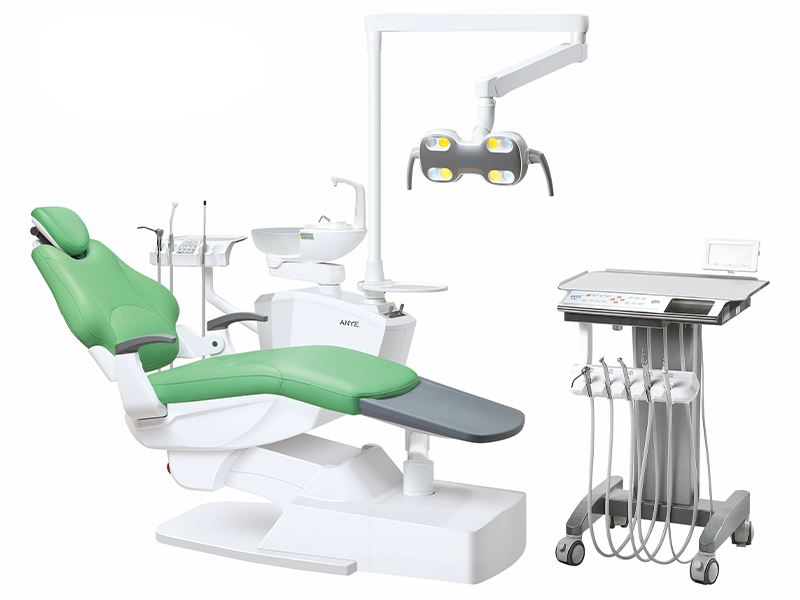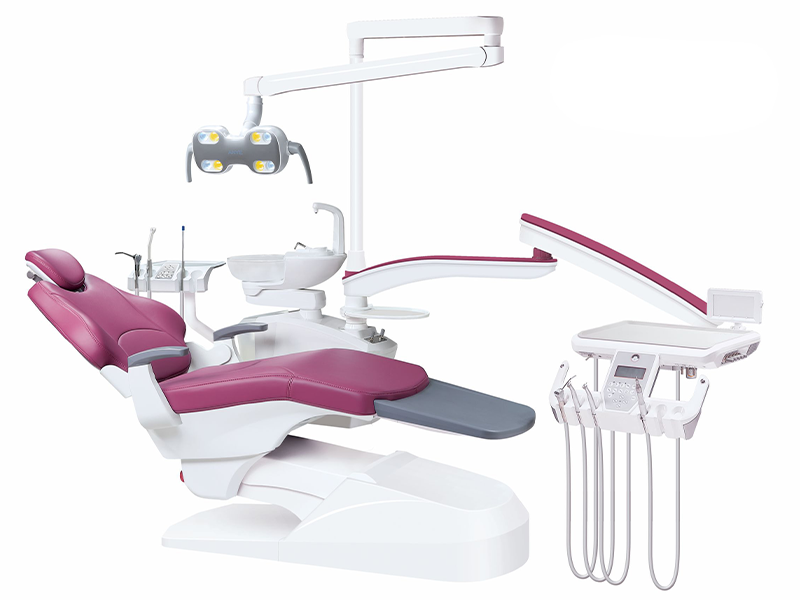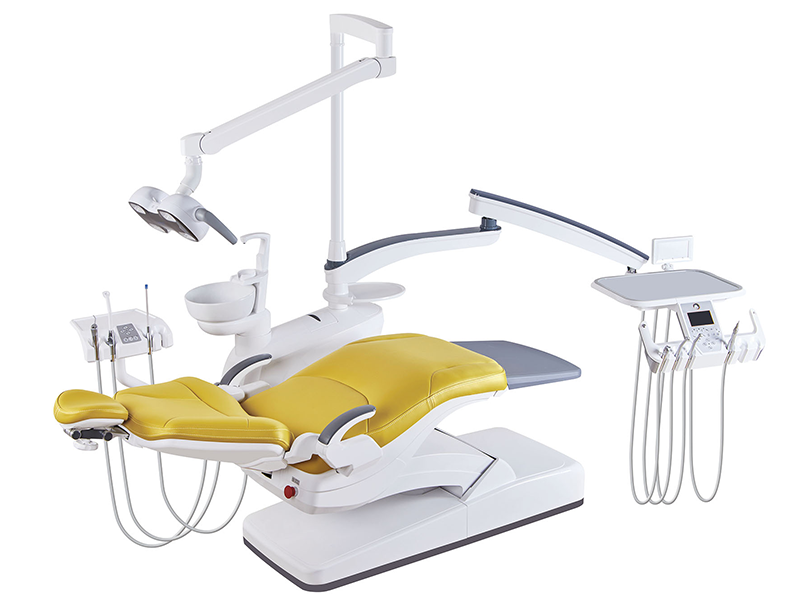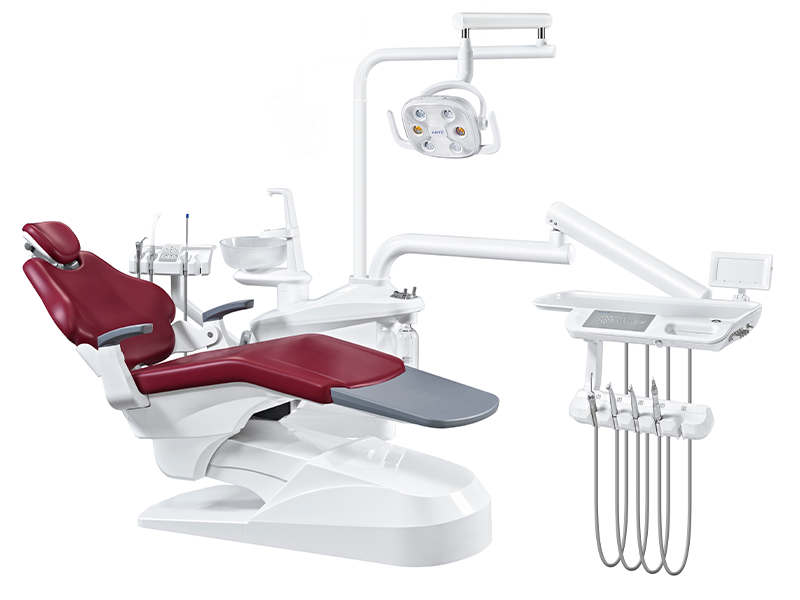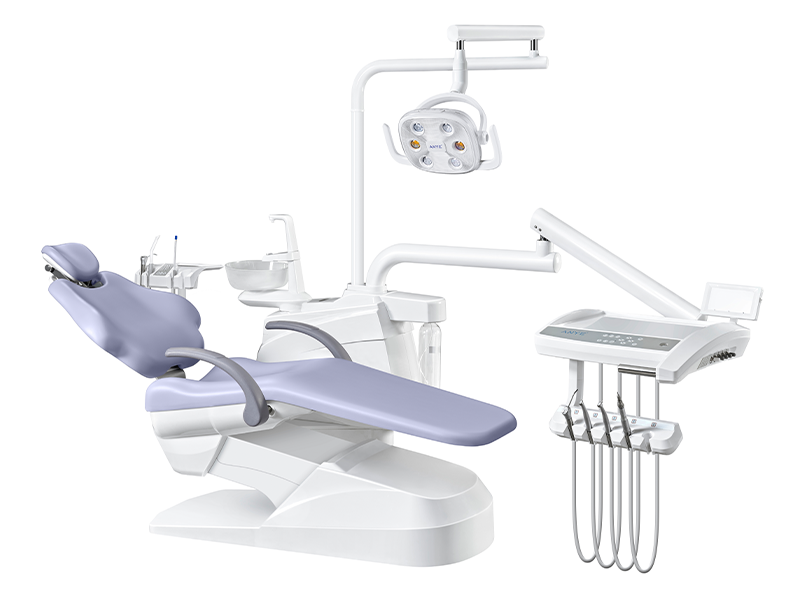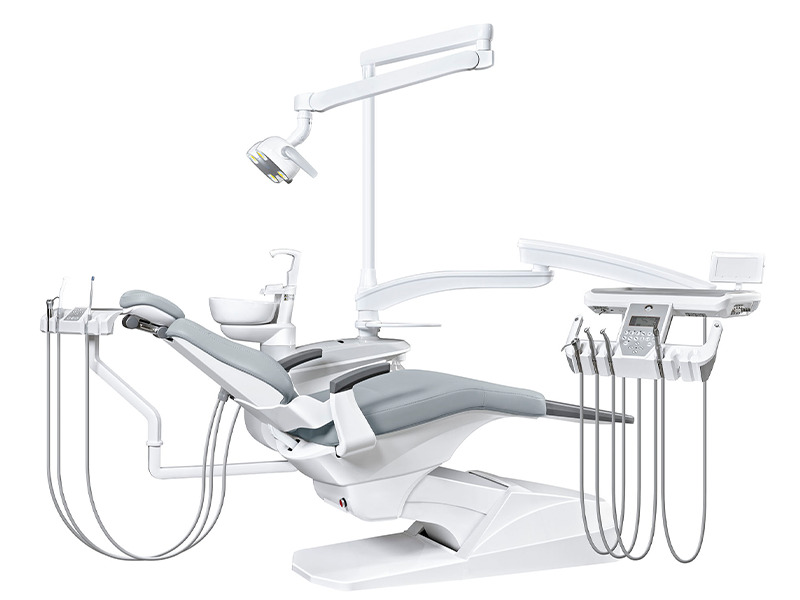In the dental equipment market, European brands have long been considered the epitome of quality and innovation. However, Chinese manufacturers, particularly Anye Dental, are making remarkable strides by producing high-quality dental chairs with advanced technology at competitive prices. Founded in 1998, Anye Dental has positioned itself as a leading provider of premium dental units, serving over 70 countries worldwide while adhering to stringent international standards, including ISO13485 and CE certifications.
Manufacturing Excellence: Anye Dental's State-of-the-Art Facility
Anye Dental operates a sprawling 15,000-square-meter manufacturing facility equipped with state-of-the-art technology. The company utilizes German KUKA robots and Han's laser machines to ensure precision in manufacturing. This high-tech infrastructure allows Anye Dental to produce dental chairs that exhibit superior quality, durability, and accuracy. Throughout the production process, Anye Dental uses premium materials like ASA plastic and cast aluminum, combined with rigorous testing to guarantee product reliability.
Diverse Product Range: Anye Dental's AY Series
Anye Dental offers a broad selection of dental chairs designed to meet the diverse needs of dental professionals and patients. Their AY series includes various configurations to cater to both adult and pediatric dentistry, offering ergonomic designs, modern technology, and comfort-focused features.
The AY Series Models Include:
- AY-215A Series (A1, A2, A3, A5): Adult dental chairs with different configurations and features designed to enhance comfort and functionality.
- AY-215B Series (B1, B2, B3, B5): These models emphasize patient comfort while incorporating advanced features for enhanced usability.
- AY-215C Series (C1, C2, C3, C5): Designed with modern aesthetics and cutting-edge technology, these chairs cater to a variety of dental procedures.
- AY-215D Series (D2, D3): Pediatric dental chairs with playful designs and smaller dimensions, specially created to cater to children's dental care.
- AY Rehabilitation Chair (E1): Tailored for patients with mobility challenges, this model ensures accessibility and comfort.
- Sterilization Chairs (215-B5 and 215-C5): Designed for easy cleaning and sterilization, these chairs focus on maintaining hygiene in pre- and post-treatment settings.
These models demonstrate Anye Dental’s commitment to producing innovative and high-quality dental equipment that meets the varied needs of the global dental community.
Key Features and Advantages: Chinese vs. European Dental Chairs
When comparing Chinese dental chairs, specifically those from Anye Dental, to their European counterparts, it becomes clear that Chinese manufacturers are narrowing the gap in terms of quality, design, and technology. Anye Dental's chairs offer several key advantages:
1. Quality-Price Balance
Anye Dental provides high-quality dental chairs equipped with advanced features at significantly more competitive prices compared to European brands. This balance between quality and affordability makes Anye Dental a compelling option for dental professionals looking for cost-effective solutions without compromising on performance.
2. Ergonomic Design
Anye Dental places a strong emphasis on both patient and dentist comfort. Their dental chairs feature ergonomic designs with adjustable headrests, lumbar support, and contoured backrests, ensuring optimal comfort for both parties during dental procedures.
3. Advanced Technology
Anye Dental’s chairs incorporate modern technological features such as LED operating lights with adjustable brightness and color temperature, touchscreen control panels for easy operation, and integrated delivery systems for dental instruments. These features enhance the efficiency of dental practices, making them a viable alternative to European models that traditionally dominate the market.
4. Durable Construction
Made with premium materials like cast aluminum and high-grade upholstery, Anye Dental chairs are designed for longevity and reliability. The careful selection of materials ensures that the chairs not only last longer but also maintain their aesthetic appeal over time.
These features make Anye Dental a strong competitor in the global dental equipment market, offering European-quality solutions at a fraction of the cost.
The AY-215A5: Anye Dental’s Flagship Model
The AY-215A5 is a flagship model from Anye Dental, exemplifying their commitment to innovation, ergonomics, and advanced technology. Designed for modern dental practices, the AY-215A5 combines precision engineering with comfort-driven features for both patients and practitioners.
Cutting-Edge Technology Meets Ergonomic Design
The AY-215A5 is equipped with advanced features that enhance both patient comfort and dentist productivity:
- 24V DC Electric Chair: Offers smooth, precise movements with quiet operation and consistent performance, improving the overall treatment experience.
- LED Oral Lamp: Provides adjustable brightness and color temperature, ensuring optimal illumination during dental procedures while being energy-efficient.
- Touchscreen Display: Features an intuitive interface with programmable memory positions, allowing for quick and easy adjustments and easy cleaning of the unit.
Advanced Ergonomics for Enhanced Productivity
Designed with both dentist and patient in mind, the AY-215A5 boasts the following ergonomic features:
- Thin, Flexible Backrest: Allows the dentist to work in closer proximity to the patient, reducing strain during extended procedures.
- Adjustable Headrest: Designed to accommodate a wide range of patient sizes and treatment positions, ideal for specialties like orthodontics or geriatric dentistry.
- Integrated Foot Control: Provides hands-free operation, enabling dentists to adjust the chair and instruments without contaminating the sterile field.
Technical Specifications
The AY-215A5 offers the following specifications:
- Power Voltage: 220V-50HZ/60HZ
- Motor Voltage: 24V
- Air Pressure: 0.5MPa-0.8MPa
- Water Pressure: 0.2MPa-0.4MPa
- LED Lamp Color Temperature: 5000K ± 10%
- Programmable Positions: 9
- Weight Capacity: Up to 185 kg
These technical specifications ensure that the AY-215A5 meets the needs of diverse dental professionals and practices.
Seamless Integration with Modern Dental Practices
The AY-215A5 is designed to integrate seamlessly with other dental technologies, including intraoral scanners and dental practice management software. This compatibility ensures that dental practices can enhance workflow efficiency and improve patient care with minimal effort. By choosing the AY-215A5, dental practices position themselves at the forefront of dental technology, optimizing both operational efficiency and patient outcomes.
Conclusion: The Future of Dental Equipment
Anye Dental is quickly becoming a key player in the dental equipment market, offering high-quality, innovative products at affordable prices. Their ability to combine advanced technology, ergonomic design, and durability positions them as a serious competitor to European dental chair manufacturers. With a diverse range of products like the AY-215A5 flagship model, Anye Dental is poised to lead the way in dental technology, making top-tier equipment accessible to dental professionals worldwide.
For more information, visit Anye Dental.
For a visual overview of Anye Dental's offerings, you can watch the following video:


